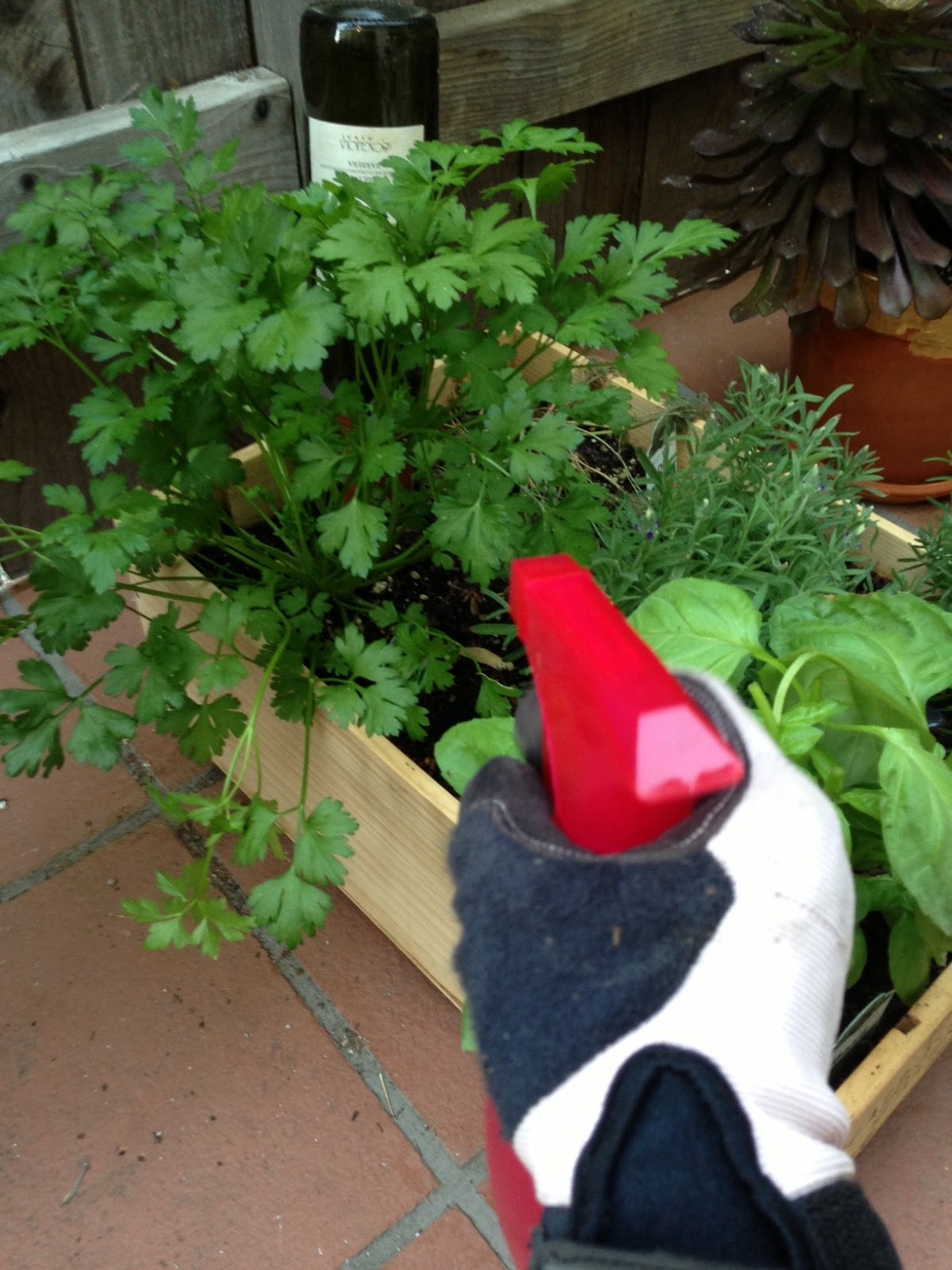Every time I go outside or look out the window and see my herb box, it makes me happy. As mentioned before, it was a bit more of a laborious process than expected, with two visits to the hardware store, a long visit to Michael's <shudder>, and multiple days required to drill the holes because my drill kept dying. But the end result was worth it! And if you learn from the few small hangups I had, this is actually another very easy project.
First, you need a wine box. As mentioned before, you can either beg one of a specialty wine store, or you can just buy one from winepine.com like I did.
Next, grab your tools. I made my holes 7/8" in diameter. There are drill bits especially made to drill holes through wood, just make sure they fit your drill. The first bit I bought did not fit my "lady drill" (as the hardware store clerk called it), but I found another one that did.

Space your holes out for even and adequate drainage. I do not know what the perfect number of holes is, but I decided on eight. My lady drill, which is awesome as you can see, was plenty adequate... once it was charged. (Next time, I will think ahead and charge it overnight the preceding night).
To avoid having all your dirt fall through the holes onto your patio, I recommend placing some sort of mesh over the holes. After scouring Michael's, I found this plastic craft mesh, shaped like hearts, no less. It worked perfectly! I glued it in place with regular craft glue.
Next comes the fun part... pick your plants and plant away! Take notice when you choose your plants that many wine crates (mine included) are only 7" in height, with individually sold plants often already in pots around 5" tall. That does not leave too much room for soil at the bottom. I probably would have chosen smaller plants if they had been available.
 Now for some accessories -- to avoid root rot and water damage to your patio, little plant stands are great. Also, another lovely addition is a plant nanny to make sure your herbs stay hydrated. To use, place a an old bottle of wine, filled with water, upside down into the cone. The water will slowly seep out through the terracotta. This is more important if you sometimes neglect your plant babies or you have less drought tolerant herbs in your box.
Now for some accessories -- to avoid root rot and water damage to your patio, little plant stands are great. Also, another lovely addition is a plant nanny to make sure your herbs stay hydrated. To use, place a an old bottle of wine, filled with water, upside down into the cone. The water will slowly seep out through the terracotta. This is more important if you sometimes neglect your plant babies or you have less drought tolerant herbs in your box.
And then you're done, with a beautiful and functional wine crate herb box you can be proud of!






























